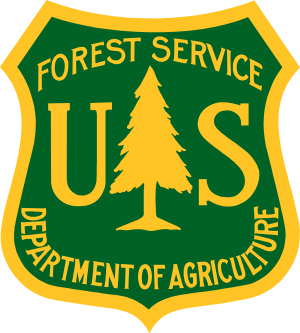July 14, 2018 - This is a list of frequently asked questions regarding the MODIS Active Fire Mapping Program.
 1. What is the USDA Forest Service MODIS Active Fire Mapping Program?
1. What is the USDA Forest Service MODIS Active Fire Mapping Program?The MODIS Active Fire Mapping Program provides a near real-time geospatial overview of the current wildland fire situation at regional and national scales. Locations of current fires and the extent of previous fire activity are ascertained using satellite imagery acquired by the MODIS sensor. These fire data are integrated with various sources of contextual spatial data and information in a suite of geospatial data and mapping products. This information is utilized by fire managers to assess the current fire situation and serves as a decision support tool in strategic decisions regarding fire suppression resource allocation. The data and products provided by the program are also valuable for numerous other fire-related applications.
2. What is MODIS?
MODIS is the Moderate Resolution Imaging Spectroradiometer. The MODIS instrument is a polar orbiting, high temporal, moderate spatial resolution sensor that acquires remote sensing data for monitoring the Earths land, ocean and atmosphere. The MODIS instrument is currently on board two NASA EOS satellites Terra, launched in December 1999, and Aqua, launched in May 2002.
3. How often does MODIS acquire data and what are the characteristics of the data?
Each MODIS sensor has a wide field of view (2,330 kilometers) that allows the sensor to image the Earth on a daily basis at latitudes greater than 30 degrees and every 1 to 2 days at latitudes less than 30 degrees. MODIS image data are acquired in 36 co-registered spectral bands at moderate spatial resolutions (250, 500, and 1,000 meters). Thermal information is collected at 1,000-meter spatial resolution and is collected twice daily by each sensor (one daytime and one nighttime observation) in the mid to high latitudes.
4. What geographic areas does the MODIS Active Fire Mapping Program cover?
The MODIS Active Fire Mapping Program provides active fire detection and monitoring for the continental United States, Alaska, Hawaii and Canada.
5. How often are the data and products on this website updated?
MODIS fire detection data and products are continuously updated and published year round to provide temporal and spatial coverage for the variable fire conditions that occur year round on the North American continent. MODIS data are acquired and processed typically within one hour of acquisition. MODIS data and products are made available on the program website immediately following data acquisition and processing.
Disclaimer
The USFS attempts to use the most current and complete geospatial data available. Geospatial data accuracy varies by theme on the maps. These maps are intended as a synoptic view of past and present fire activity over the date and time periods described in the maps. Using these maps or data for other than their intended purpose may yield inaccurate or misleading results. The USFS reserves the right to correct, update or modify geospatial inputs to these maps without notification. Although these data have been used by the USDA Forest Service, the USDA Forest Service shall not be held liable for improper or incorrect use of the maps and data described and/or contained herein. These maps and data are not legal documents and are not intended to be used as such. The information contained in these maps and data is dynamic and is updated daily throughout the current year.It is the responsibility of the user to use the maps and data appropriately and consistent within the limitations of geospatial data in general and these data in particular. The USDA Forest Service gives no warranty, expressed or implied, as to the accuracy, reliability, or completeness of these maps and data. It is strongly recommended that these maps and data are directly acquired from the USDA Forest Service server and not indirectly through other sources which may have changed the maps and data in some way. Although these maps and data have been processed successfully on a computer system at the USDA Forest Service, no warranty expressed or implied is made regarding the utility of the maps and data on another system or for general or scientific purposes, nor shall the act of distribution constitute any such warranty. This disclaimer applies both to individual use of the maps and data and their aggregate use with other data. Utilizing the maps and/or data from this page indicates your understanding and acceptance of the terms described above.
Source: USDA Forest Service








